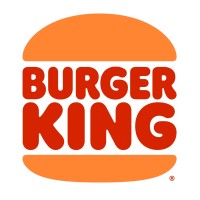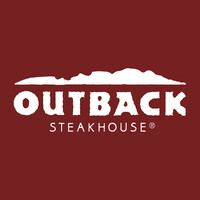Company Details
burger-king
108,914
693,711
7225
bk.com
0
BUR_1233888
In-progress

Burger King Company CyberSecurity Posture
bk.comThe year is 1954. Dave and Jim*, two budding entrepreneurs, are on a mission to re-design the perfect broiler, one that will infuse flame-grilled goodness into every burger. And that's how our brand was born. Today the Burger King Corporation, its affiliates and its franchisees collectively operate more than 17,000 restaurants in more than 100 countries and U.S. territories, serving over 11 million guests per day and they’re still coming back for that flame-grilled flavor. The Burger King® brand is owned by Restaurant Brands International Inc. (“RBI”), which owns three of the world’s iconic quick service restaurant brands – Burger King®, Tim Hortons®, and Popeyes Louisiana Kitchen®. But we still have room to grow – and that’s where you come in. We need strong operations, bold marketing, and the best people around to make these brands great. And if we like what we see, there’s no limit to how far you could go here. For more information and exciting career opportunities, please RBI’s website at www.rbicareers.com. For more information about Burger King Corporation, please visit the company’s website at www.bk.com or follow us on Facebook and Twitter. Burger King is a registered trademark of Burger King Corporation. All rights reserved. Please visit www.bk.com for more information on Burger King Corporation trademarks. * Dave Egerton and Jim McLamore, original founders of the Burger King® brand.
Company Details
burger-king
108,914
693,711
7225
bk.com
0
BUR_1233888
In-progress
Between 750 and 799

 Burger King Global Score (TPRM)
Burger King Global Score (TPRM)XXXX

Description: Burger King, the world's largest fast food chain, exposed sensitive credentials to the public twice, endangering their systems and data. Burger King in France exposed private information to the public as a result of a website configuration error, the Cybernews investigation team found. People who applied for jobs at Burger King in France may have been impacted because the impacted website processed job applications. It's not the first time Burger King has exposed sensitive information; supposedly, the France branch exposed personally identifying information (PII) of children who purchased Burger King menus due to a similar misconfiguration.
Description: A French online shop Kool King specifically tailored to be used by kids who bought Burger King menus exposed nearly 37,900 records after a cyber attack. The data was leaked because the database storing it was misconfigured, allowing anyone with an Internet connection and the knowledge to find it to get to the records stored within. Since the database was not secured in any way and publicly accessible, anyone who reached it could then edit, download, or even destroy the data without needing admin credentials. The information compromised contained personally identifiable information (PII) such as emails, passwords, names, phones, DOB, voucher codes, links to the externally stored certificates, etc.100
Description: Ethical hackers **BobDaHacker** and **BobTheShoplifter** exposed severe security vulnerabilities within **Restaurant Brands International (RBI)**, the parent company of Burger King, Tim Hortons, and Popeyes. The flaws included **hard-coded passwords** (e.g., 'admin') in HTML and drive-through systems, **plain-text passwords sent via email**, and an **unrestricted API** allowing unauthorized admin access. The hackers gained entry to **employee accounts, internal configurations, raw audio recordings of drive-through conversations** (containing customer personal data processed by AI), and even **restaurant bathroom rating systems**. The breaches revealed **catastrophic oversight** in cybersecurity fundamentals, with no basic safeguards like antivirus checks or system audits. While the ethical hackers responsibly disclosed the issues and confirmed **no customer data was retained**, the exposure demonstrated how easily malicious actors could have exploited these gaps. RBI reportedly fixed the vulnerabilities post-disclosure but did not publicly acknowledge the researchers, raising concerns about long-term security improvements. The incident underscores systemic negligence in protecting **30,000+ global outlets** from potential data leaks, financial fraud, or operational disruptions.


No incidents recorded for Burger King in 2025.
No incidents recorded for Burger King in 2025.
No incidents recorded for Burger King in 2025.
Burger King cyber incidents detection timeline including parent company and subsidiaries

The year is 1954. Dave and Jim*, two budding entrepreneurs, are on a mission to re-design the perfect broiler, one that will infuse flame-grilled goodness into every burger. And that's how our brand was born. Today the Burger King Corporation, its affiliates and its franchisees collectively operate more than 17,000 restaurants in more than 100 countries and U.S. territories, serving over 11 million guests per day and they’re still coming back for that flame-grilled flavor. The Burger King® brand is owned by Restaurant Brands International Inc. (“RBI”), which owns three of the world’s iconic quick service restaurant brands – Burger King®, Tim Hortons®, and Popeyes Louisiana Kitchen®. But we still have room to grow – and that’s where you come in. We need strong operations, bold marketing, and the best people around to make these brands great. And if we like what we see, there’s no limit to how far you could go here. For more information and exciting career opportunities, please RBI’s website at www.rbicareers.com. For more information about Burger King Corporation, please visit the company’s website at www.bk.com or follow us on Facebook and Twitter. Burger King is a registered trademark of Burger King Corporation. All rights reserved. Please visit www.bk.com for more information on Burger King Corporation trademarks. * Dave Egerton and Jim McLamore, original founders of the Burger King® brand.


Founded in 1982, Olive Garden is owned by Darden Restaurants, Inc. (NYSE:DRI), the world's largest company-owned and operated full-service restaurant company. With more than 800 restaurants, more than 92,000 employees and more than $3.5 billion in annual sales, Olive Garden is the leading restaurant
We're known for our huge restaurants and generous portions but we're so much more than that! Here, you'll have big opportunities to learn and grow your career, you can take pride in the work you do, be able to balance your life with the hours and schedule you need, and be part of a team committed to
Dallas-based Brinker International, Inc. is one of the world’s leading casual dining restaurant companies. Founded in 1975, Brinker owns, operates or franchises more than 1,600 restaurants across 31 countries and two territories under the names Chili’s® Grill & Bar and Maggiano’s Little Italy®. O

Made with an Australian flair, born under the Tampa sun. Outback Steakhouse is an Australian-inspired restaurant providing high quality delicious food with Aussie hospitality since 1988. Our success is based on our belief that if we take care of Our People, the institution of Outback will take care

Papa Johns seeks people who have an entrepreneurial spirit and share our philosophy for success. Hands-on training, a clean and safe work environment, quality business practices, advancement opportunities and meaningful work combine to produce not only the best pizza, but also the best team members!

History: *1986: The first Five Guys location opens in Arlington, VA. *1986 - 2001: Five Guys opens five locations around the DC metro-area and perfected their business of making burgers… and starts to build a cult-like following. * 2002: Five Guys decides DC metro-area residents shouldn't be the

At its Atlanta headquarters, known as the Corporate Support Center, Chick-fil-A, Inc. offers full-time careers in various fields such as Digital Transformation & Technology, Financial Services & Accounting, Enterprise Analytics, Restaurant Development, Early Talent Programs and more. Our team of mor

Somos um grande ecossistema de restaurantes que reúne marcas internacionais como Burger King®, Popeyes®, Starbucks® e Subway®. E, por trás de cada receita de sucesso, estão os Zampers: gente que faz acontecer, que joga junto e que deixa sua marca todos os dias. Aqui, a gente acredita que o verdad
Chipotle Mexican Grill, Inc. (NYSE: CMG) is cultivating a better world by serving responsibly sourced, classically-cooked, real food with wholesome ingredients without artificial colors, flavors or preservatives. Chipotle has over 3,250 restaurants in the United States, Canada, the United Kingdom, F
.png)
The Third Circuit upheld an arbitrator's ruling that Burger King didn't discriminate against an ex-employee's pregnancy when her superiors...
Earlier this week, Tom's Hardware reported that two ethical hackers, BobDaHacker and BobTheShoplifter, discovered “catastrophic” cybersecurity.
Burger King is struggling with change. Specifically, pennies. On a recent call, Burger King's technology specialists quickly moved on from cybersecurity and...
UK businesses, universities, and secondary schools have come under unprecedented hacking attacks over the past year, with 9/10 of polled...
Co-op lost £206 million due to cyberattack, South Korean credit card company hacked, Maryland Transit Administration ransomware attack.
Noteworthy stories that might have slipped under the radar: Eve Security seed funding, Claroty report, patches from WatchGuard and Nokia.
Ethical hacker BobDaHacker published an in-depth report demonstrating how attackers could bypass authentication, eavesdrop on customer...
Burger King has invoked the Digital Millennium Copyright Act to force the removal of a security researcher's blog post that disclosed...
Burger King has invoked the U.S. Digital Millennium Copyright Act (DMCA) to force the removal of a security researcher's blog post that...

Explore insights on cybersecurity incidents, risk posture, and Rankiteo's assessments.
The official website of Burger King is http://www.bk.com.
According to Rankiteo, Burger King’s AI-generated cybersecurity score is 774, reflecting their Fair security posture.
According to Rankiteo, Burger King currently holds 0 security badges, indicating that no recognized compliance certifications are currently verified for the organization.
According to Rankiteo, Burger King is not certified under SOC 2 Type 1.
According to Rankiteo, Burger King does not hold a SOC 2 Type 2 certification.
According to Rankiteo, Burger King is not listed as GDPR compliant.
According to Rankiteo, Burger King does not currently maintain PCI DSS compliance.
According to Rankiteo, Burger King is not compliant with HIPAA regulations.
According to Rankiteo,Burger King is not certified under ISO 27001, indicating the absence of a formally recognized information security management framework.
Burger King operates primarily in the Restaurants industry.
Burger King employs approximately 108,914 people worldwide.
Burger King presently has no subsidiaries across any sectors.
Burger King’s official LinkedIn profile has approximately 693,711 followers.
Burger King is classified under the NAICS code 7225, which corresponds to Restaurants and Other Eating Places.
No, Burger King does not have a profile on Crunchbase.
Yes, Burger King maintains an official LinkedIn profile, which is actively utilized for branding and talent engagement, which can be accessed here: https://www.linkedin.com/company/burger-king.
As of November 27, 2025, Rankiteo reports that Burger King has experienced 3 cybersecurity incidents.
Burger King has an estimated 4,808 peer or competitor companies worldwide.
Incident Types: The types of cybersecurity incidents that have occurred include Data Leak and Breach.
Detection and Response: The company detects and responds to cybersecurity incidents through an incident response plan activated with yes (after ethical hacker disclosure), and containment measures with patch applied to vulnerabilities (reportedly), and communication strategy with no public acknowledgment of ethical hackers or incident details..
Title: Kool King Data Breach
Description: A French online shop Kool King specifically tailored to be used by kids who bought Burger King menus exposed nearly 37,900 records after a cyber attack. The data was leaked because the database storing it was misconfigured, allowing anyone with an Internet connection and the knowledge to find it to get to the records stored within. Since the database was not secured in any way and publicly accessible, anyone who reached it could then edit, download, or even destroy the data without needing admin credentials. The information compromised contained personally identifiable information (PII) such as emails, passwords, names, phones, DOB, voucher codes, links to the externally stored certificates, etc.
Type: Data Breach
Attack Vector: Misconfigured Database
Vulnerability Exploited: Publicly Accessible Database
Title: Burger King Data Exposure Incidents
Description: Burger King, the world's largest fast food chain, exposed sensitive credentials to the public twice, endangering their systems and data.
Type: Data Exposure
Attack Vector: Website Configuration Error
Vulnerability Exploited: Website Misconfiguration
Common Attack Types: The most common types of attacks the company has faced is Data Leak.
Identification of Attack Vectors: The company identifies the attack vectors used in incidents through Hard-coded password in HTMLDefault 'admin' password in drive-through tabletsUnrestricted API signup.

Data Compromised: Emails, Passwords, Names, Phones, Dob, Voucher codes, Links to the externally stored certificates
Systems Affected: Database

Data Compromised: Personally identifiable information (pii), Children's pii
Systems Affected: Job Application WebsiteOnline Ordering System
Commonly Compromised Data Types: The types of data most commonly compromised in incidents are Emails, Passwords, Names, Phones, Dob, Voucher Codes, Links To The Externally Stored Certificates, , Pii, Children'S Pii, , Employee Credentials, Internal Configurations, Audio Recordings (Potential Pii), Operational Data and .

Entity Name: Kool King
Entity Type: Online Shop
Industry: Retail
Location: France
Customers Affected: 37900

Entity Name: Burger King
Entity Type: Corporation
Industry: Fast Food
Location: France
Incident Response Plan: The company's incident response plan is described as Yes (after ethical hacker disclosure).

Type of Data Compromised: Emails, Passwords, Names, Phones, Dob, Voucher codes, Links to the externally stored certificates
Number of Records Exposed: 37900
Sensitivity of Data: High
Personally Identifiable Information: emailspasswordsnamesphonesDOB

Type of Data Compromised: Pii, Children's pii
Personally Identifiable Information: Job ApplicantsChildren's PII
Handling of PII Incidents: The company handles incidents involving personally identifiable information (PII) through by patch applied to vulnerabilities (reportedly) and .
Key Lessons Learned: The key lessons learned from past incidents are Systemic neglect of basic cybersecurity practices (e.g., hard-coded passwords, plain-text credentials, unrestricted APIs) can expose global enterprises to severe risks. Ethical hacking revealed critical gaps in access controls, credential management, and operational security across RBI’s brands.

Source: Cybernews Investigation Team
Additional Resources: Stakeholders can find additional resources on cybersecurity best practices at and Source: Cybernews Investigation Team, and Source: Tom’s Hardware, and Source: Ethical Hackers’ Blog (Archived).
Communication of Investigation Status: The company communicates the status of incident investigations to stakeholders through No public acknowledgment of ethical hackers or incident details.

Root Causes: Misconfigured Database
Corrective Actions Taken: The company has taken the following corrective actions based on post-incident analysis: Patches Applied To Reported Vulnerabilities (Per Rbi), No Public Confirmation Of Broader Security Overhaul Or Policy Changes, .
Last Attacking Group: The attacking group in the last incident was an BobDaHacker (Ethical Hacker)BobTheShoplifter (Ethical Hacker).
Most Significant Data Compromised: The most significant data compromised in an incident were emails, passwords, names, phones, DOB, voucher codes, links to the externally stored certificates, , Personally Identifiable Information (PII), Children's PII, , Employee account credentials, Internal system configurations, Drive-through audio recordings (potential PII), Restaurant operational data (e.g., bathroom rating screens) and .
Most Significant System Affected: The most significant system affected in an incident was Job Application WebsiteOnline Ordering System and Equipment ordering websiteDrive-through tablet systemsAI-powered customer/staff evaluation systemsRestaurant management APIsBathroom rating screens.
Containment Measures in Most Recent Incident: The containment measures taken in the most recent incident was Patch applied to vulnerabilities (reportedly).
Most Sensitive Data Compromised: The most sensitive data compromised in a breach were Internal system configurations, Drive-through audio recordings (potential PII), voucher codes, links to the externally stored certificates, DOB, Children's PII, emails, Personally Identifiable Information (PII), phones, Restaurant operational data (e.g., bathroom rating screens), passwords, Employee account credentials and names.
Number of Records Exposed in Most Significant Breach: The number of records exposed in the most significant breach was 379.0.
Most Significant Lesson Learned: The most significant lesson learned from past incidents was Systemic neglect of basic cybersecurity practices (e.g., hard-coded passwords, plain-text credentials, unrestricted APIs) can expose global enterprises to severe risks. Ethical hacking revealed critical gaps in access controls, credential management, and operational security across RBI’s brands.
Most Significant Recommendation Implemented: The most significant recommendation implemented to improve cybersecurity was Restrict API access with proper authentication/authorization, Implement robust password policies and multi-factor authentication (MFA), Establish a transparent vulnerability disclosure program, Monitor dark web for exposed credentials or system access, Conduct regular security audits and penetration testing, Train employees on secure credential handling and phishing risks and Eliminate hard-coded credentials and enforce encryption for sensitive data.
Most Recent Source: The most recent source of information about an incident are Ethical Hackers’ Blog (Archived), Tom’s Hardware and Cybernews Investigation Team.
Current Status of Most Recent Investigation: The current status of the most recent investigation is Completed (by ethical hackers; RBI applied fixes but no public report).
Most Significant Root Cause: The most significant root cause identified in post-incident analysis was Misconfigured Database, Lack of basic cybersecurity hygiene (e.g., hard-coded passwords, plain-text credentials)Absence of access controls (e.g., unrestricted API access)Inadequate system audits and vulnerability assessmentsPoor credential management practicesCorporate neglect of security fundamentals despite global scale.
Most Significant Corrective Action: The most significant corrective action taken based on post-incident analysis was Patches applied to reported vulnerabilities (per RBI)No public confirmation of broader security overhaul or policy changes.
.png)
Angular is a development platform for building mobile and desktop web applications using TypeScript/JavaScript and other languages. Prior to versions 19.2.16, 20.3.14, and 21.0.1, there is a XSRF token leakage via protocol-relative URLs in angular HTTP clients. The vulnerability is a Credential Leak by App Logic that leads to the unauthorized disclosure of the Cross-Site Request Forgery (XSRF) token to an attacker-controlled domain. Angular's HttpClient has a built-in XSRF protection mechanism that works by checking if a request URL starts with a protocol (http:// or https://) to determine if it is cross-origin. If the URL starts with protocol-relative URL (//), it is incorrectly treated as a same-origin request, and the XSRF token is automatically added to the X-XSRF-TOKEN header. This issue has been patched in versions 19.2.16, 20.3.14, and 21.0.1. A workaround for this issue involves avoiding using protocol-relative URLs (URLs starting with //) in HttpClient requests. All backend communication URLs should be hardcoded as relative paths (starting with a single /) or fully qualified, trusted absolute URLs.
Forge (also called `node-forge`) is a native implementation of Transport Layer Security in JavaScript. An Uncontrolled Recursion vulnerability in node-forge versions 1.3.1 and below enables remote, unauthenticated attackers to craft deep ASN.1 structures that trigger unbounded recursive parsing. This leads to a Denial-of-Service (DoS) via stack exhaustion when parsing untrusted DER inputs. This issue has been patched in version 1.3.2.
Forge (also called `node-forge`) is a native implementation of Transport Layer Security in JavaScript. An Integer Overflow vulnerability in node-forge versions 1.3.1 and below enables remote, unauthenticated attackers to craft ASN.1 structures containing OIDs with oversized arcs. These arcs may be decoded as smaller, trusted OIDs due to 32-bit bitwise truncation, enabling the bypass of downstream OID-based security decisions. This issue has been patched in version 1.3.2.
Suricata is a network IDS, IPS and NSM engine developed by the OISF (Open Information Security Foundation) and the Suricata community. Prior to versions 7.0.13 and 8.0.2, working with large buffers in Lua scripts can lead to a stack overflow. Users of Lua rules and output scripts may be affected when working with large buffers. This includes a rule passing a large buffer to a Lua script. This issue has been patched in versions 7.0.13 and 8.0.2. A workaround for this issue involves disabling Lua rules and output scripts, or making sure limits, such as stream.depth.reassembly and HTTP response body limits (response-body-limit), are set to less than half the stack size.
Suricata is a network IDS, IPS and NSM engine developed by the OISF (Open Information Security Foundation) and the Suricata community. In versions from 8.0.0 to before 8.0.2, a NULL dereference can occur when the entropy keyword is used in conjunction with base64_data. This issue has been patched in version 8.0.2. A workaround involves disabling rules that use entropy in conjunction with base64_data.

Get company history
















Every week, Rankiteo analyzes billions of signals to give organizations a sharper, faster view of emerging risks. With deeper, more actionable intelligence at their fingertips, security teams can outpace threat actors, respond instantly to Zero-Day attacks, and dramatically shrink their risk exposure window.
Identify exposed access points, detect misconfigured SSL certificates, and uncover vulnerabilities across the network infrastructure.
Gain visibility into the software components used within an organization to detect vulnerabilities, manage risk, and ensure supply chain security.
Monitor and manage all IT assets and their configurations to ensure accurate, real-time visibility across the company's technology environment.
Leverage real-time insights on active threats, malware campaigns, and emerging vulnerabilities to proactively defend against evolving cyberattacks.




